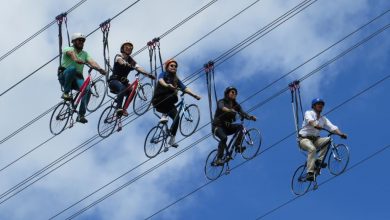
Pablo Emílio Escobar Gaviria, popularly called Pablo Escobar (Rio Negro, 1949 – Medellín, 1993), was the most famous and rich drug trafficker in the world drug trade. Born in Colombia, Escobar commanded the trafficking of cocaine to several countries and ordered thousands of deaths. He became known as “ El patrón” for running the so-called “Cartel de Medellín ”, a criminal organization maintained by money from drug trafficking.
Childhood and adolescence
Pablo Escobar had a poor childhood in the city of Rio Negro, Colombia. The son of a farmer and an elementary school teacher, the Colombian was a child who had financial difficulties.
At the beginning of his adult life, Escobar entered the Political Science course. However, Pablo and his family were unable to pay college tuition, so he had to drop out of college.

Entry into crime
Pablo dropped out of college, but his ambition was not put aside. The young Escobar found in the criminal world the possibility of earning money and gaining power. His first offense was the trade-in of smuggled cigarettes and counterfeit lottery tickets. Escobar is rumored to have entered criminality by stealing and selling cemetery headstones.
Escobar collected different types of crime early in his adult life. Pablo stole cars on the streets of Medellín and, in 1974, he was arrested for driving a stolen car. In the same decade, he divided his routine between robberies and bodyguard work.
It was in the 1970s that Pablo won his first large sum of money in crime. He kidnapped a Colombian politician and received $ 100,000 for his release.
Still, in the 1970s, Escobar found cocaine a way to make money. At the age of 22, he became a millionaire with drug trafficking and later started a scheme for the production and distribution of the drug, which would become the Medellín Cartel.
El Patrón
Pablo Escobar used intimidation and bribery to silence journalists, politicians, and members of the Colombian justice system. He was known for the phrase “ Plata o plomo ” (“money or lead”), the way he persuaded people. Those who did not accept his conditions ended up being tortured and killed by the Medellín Cartel.
Escobar had his own army, which was made up of military men who were known as sicarios. The estimate is more than 5,000 deaths under his orders.
Pablo Escobar also financed political campaigns, forming the group called Civismo em Marcha. In order to have more power over the population, El Patrón entered politics and was elected alternate deputy in 1982.
In 1989, the ranking of Forbes Magazine featured Pablo Escobar as the seventh richest man in the world.
On the other hand, Pablo was known for his populist figure. Escobar carried out works in peripheral areas of Medellín and gave money to the poor as a way to coerce the population not to report him. Many, even, reinforced the idea that he took money from the rich to distribute to the poor, and this income came from organized crime.
Prison
In 1989, Pablo Escobar was threatened with extradition to North American territory, along with other criminals. In response, the drug trafficker ordered the Medellín Cartel to bomb cities so that the Government of Virgílio Basque, who was president from 1986 to 1990, could remove the threat.
There was a wave of attacks that resulted in several deaths, 70 in the attack on the headquarters of the Administrative Department of Public Security in Bogotá. In addition, three presidential candidates were also murdered in 1990. Other murders were the result of Escobar’s conflicts against the Cali Cartel.
Still, in 1989, Pablo Escobar had information that the then-presidential candidate, César Gaviria, would be on a flight. Planning the politician’s death, the drug trafficker had a bomb implanted on the aircraft. The attack resulted in the deaths of 107 people, but Gaviria was not on the plane, ending what was planned by Escobar.
In 1991, the new Federal Constitution was approved, in which the extradition of Colombians was prohibited. With that, Pablo Escobar surrendered himself to other members of the Medellín Cartel, after negotiating to go to his own prison, a luxurious property that was named “ La Catedral ”, from where he continued to command the cocaine trade. However, he ran away in 1992.
Death
Colombian police intelligence located Pablo Escobar’s whereabouts on December 2, 1993. The drug trafficker tried to hide on a roof of a house but was shot dead. His cronies were also killed in the exchange of fire with the military.
Pablo Escobar is buried in Medellín, Colombia. His tomb became a tourist attraction on the site.
Movies and series
A figure that gained pop status, Pablo Escobar aroused curiosity in his life and also after his death. He was represented several times in dramaturgy.
Some documentaries were produced about Pablo Escobar, addressing different aspects of the life of the drug trafficker. The King of Coke (2007); Pablo: Ángel o Demonio (2007) and Pablo Escobar, the terror of Colombia (2008) are some examples.
Pablo was also played by different actors such as Benício del Toro, in Escobar: Paraíso Perdido (2014), and Javier Bardem, in Amando Pablo (2017). However, the figure of the Colombian drug trafficker became better known among new generations with the Narcos series, starring the Brazilian actor Wagner Moura.
Family
Pablo Escobar married Maria Victoria Henao in 1976, with whom he had two children: Juan Pablo and Manuela Escobar.
The drug trafficker lived with his family on a luxurious property called Fazenda Naples. The land had a farm, a zoo, and a village.
After Escobar’s death, the family moved to Argentina and changed their names to avoid persecution.





